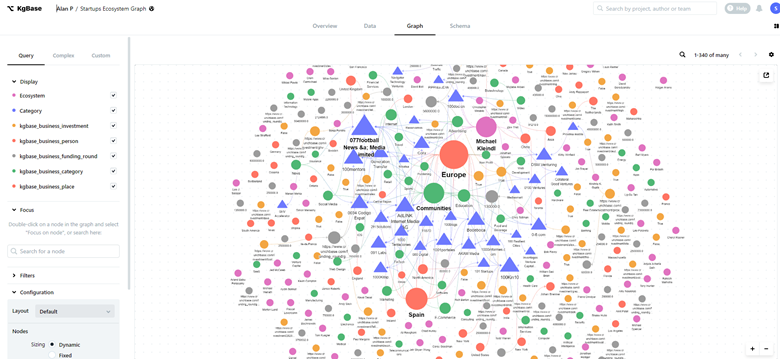No-Code Platforms for Open Platform Database Creation: Save Time and Resources
No-Code Platforms for Open Platform Database Creation: Save Time and Resources
Blog Article
Discover Just How Scalable Databases Can Be Made Use Of Without Coding to Enhance Your Business Procedures
In today's busy business environment, the ability to manage and assess data effectively is extremely important. no-code. Scalable data sources, specifically when coupled with no-code services, offer a transformative strategy that empowers non-technical customers to simplify operations.
Comprehending Scalable Databases
Scalable databases are vital for modern organization operations, enabling companies to efficiently take care of enhancing quantities of data without compromising efficiency. These data sources are designed to adapt and expand to the transforming demands of an organization, making sure that they can take care of larger datasets and more complicated questions as business needs progress.
Recognizing scalable data sources involves recognizing their two key types: vertical scaling and horizontal scaling. Vertical scaling, or "scaling up," includes including even more power (CPU, RAM) to an existing server to enhance performance. On the other hand, straight scaling, or "scaling out," involves including extra servers to distribute the tons, which typically leads to higher versatility and fault tolerance.
One more vital facet is the style of scalable data sources, which can be either relational or non-relational. Relational data sources, such as MySQL and PostgreSQL, are structured and use SQL for inquiries, while non-relational data sources, like MongoDB and Cassandra, provide even more flexibility with disorganized data.
Inevitably, comprehending scalable databases is vital for organizations aiming to leverage information as a calculated asset, allowing them to stay competitive in an increasingly data-driven environment.

Advantages of No-Code Solutions
Opening the potential of no-code solutions equips organizations to improve procedures and boost performance without the demand for substantial programming expertise. These platforms allow non-technical users to produce, change, and manage databases effortlessly, therefore democratizing accessibility to modern technology across teams.
Among the key benefits of no-code services is their rate of implementation. Organizations can quickly deploy applications and automate processes, substantially minimizing the moment invested on growth cycles. This agility makes it possible for companies to react promptly to market modifications and client needs, cultivating an one-upmanship.
In addition, no-code systems lower dependence on IT divisions for daily tasks, allowing technical teams to concentrate on more complicated tasks that require specialized abilities. This shift not only enhances resource allocation however likewise promotes innovation within the company.
Cost-effectiveness is an additional advantage, as no-code solutions can lower development and upkeep expenditures. By reducing the demand for coding proficiency, companies can harness the capabilities of their existing workforce without the overhead of working with additional workers.
Popular No-Code Data Source Tools
The increase of no-code services has led to the emergence of numerous data source tools that satisfy organizations looking for effectiveness and availability. These tools encourage individuals with restricted technical knowledge to produce, take care of, and adjust data sources perfectly.

Caspio sticks out for its capability to develop internet applications without any kind of coding. It allows organizations to develop durable databases and deploy applications quickly, accommodating numerous sector needs. Propensity provides user-friendly user interfaces and effective information management capacities, allowing companies to build custom applications customized to their operations.

Use Situations in Service Workflow
Exactly how can companies take advantage of database tools to improve read this article their procedures? Scalable data sources give companies with powerful capacities to take care of and examine information without the requirement for considerable coding understanding. These tools can enhance numerous organization processes, eventually bring about boosted performance and productivity.
One prominent usage situation is customer relationship monitoring (CRM) Services can utilize scalable databases to track customer communications, preferences, and feedback, making it possible for tailored communication and much better service. By centralizing this details, teams can team up better and react to client needs in real-time.
An additional substantial application is supply management. Firms can utilize no-code data source tools to monitor stock levels, track shipments, and projection demand. This makes certain optimal supply levels, reduces waste, and reduces stockouts.
In addition, job monitoring can benefit from scalable databases by allowing groups to take care of tasks, target dates, and resources in a combined system. With real-time updates and information visualization, project supervisors can make informed decisions.
Getting Going With Execution
Implementing scalable databases in organization operations needs an organized strategy to make certain successful integration and usage. The primary step is to carry out a complete needs assessment, identifying details organization requirements, data types, and anticipated development patterns. This fundamental understanding will guide the choice of the proper data source solution.
Next, choose an user-friendly, no-code database platform that aligns with your functional objectives. no-code. Several modern-day remedies offer user-friendly reference interfaces, enabling non-technical customers to take care of data properly. After picking a system, develop a clear information style that outlines just how data will be organized, accessed, and maintained
Training is important; make sure that staff member are furnished with the needed abilities to use the data source. Take into consideration giving tutorials or workshops to acquaint team with the system's capabilities.
Verdict
In conclusion, the integration of scalable data sources through no-code services offers considerable benefits for organization procedures. Eventually, leveraging these technologies can lead to boosted productivity and functional effectiveness, placing companies for sustained development in a competitive landscape.
One prominent no-code data source device is Airtable, which integrates the functionality of a spreadsheet with the power go to website of a data source.How can services leverage database tools to boost their procedures? Services can utilize scalable databases to track consumer interactions, choices, and responses, enabling tailored communication and much better solution.Applying scalable data sources in organization procedures needs an organized method to ensure successful assimilation and utilization.In conclusion, the combination of scalable data sources with no-code options offers significant benefits for company procedures.
Report this page